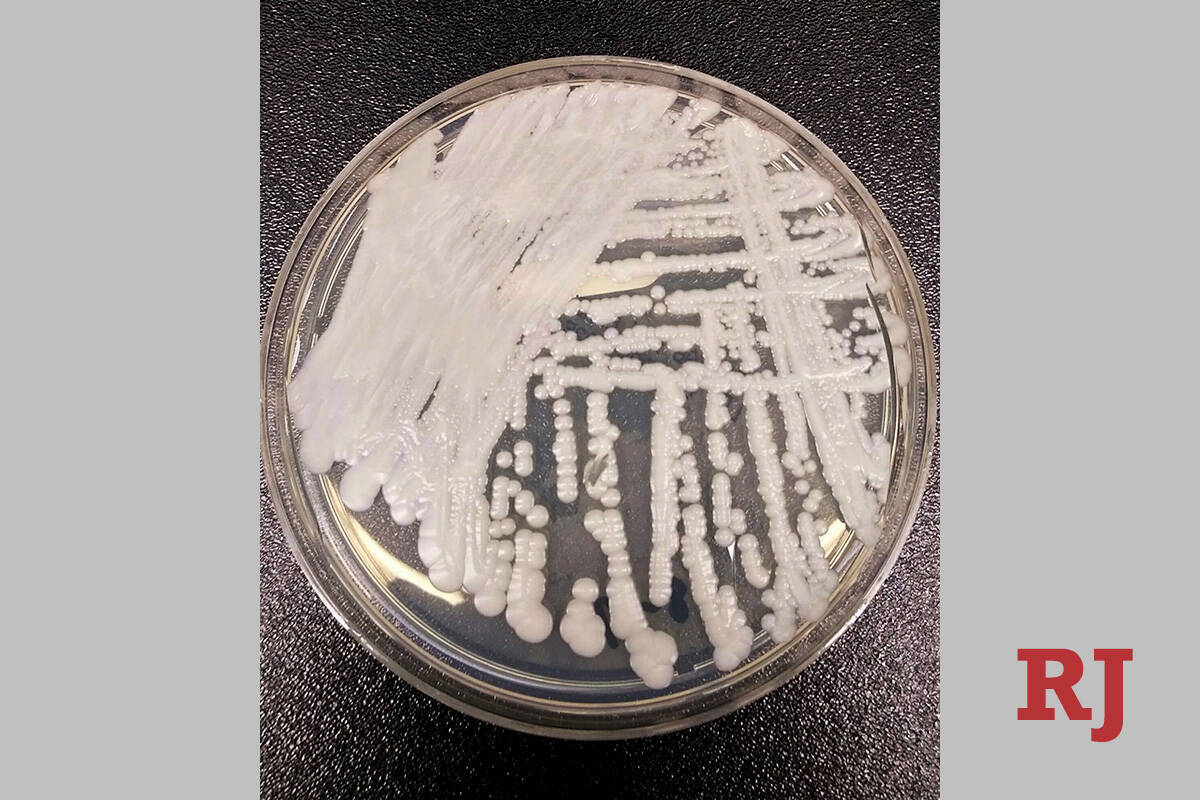Fatal fungus outbreak worries Nevada lawmakers, more help wanted

Nevada’s entire congressional delegation is calling upon the federal government to do more to fight a potentially lethal fungus causing the largest outbreaks in the country at Southern Nevada hospitals and long-term care facilities.
In a letter Friday to the the director of the Centers for Disease Control and Prevention, the delegation asks the federal public health agency to take decisive action against fungus Candida auris and to “swiftly deliver necessary resources to the public health professionals and health care providers in Nevada on the front lines of this outbreak.”
Heightened concern
The letter to CDC Director Dr. Rochelle Walensky said that the delegation remains concerned that the agency, despite classifying the drug-resistant fungus as an urgent threat,“has yet to develop a comprehensive plan to prevent further spread of C. auris in Nevada and the more than 26 states now reporting infections.”
CDC public affairs representative Kristen Nordlund said an email, “CDC has received the letter and looks forward to working with the Nevada congressional delegation and Nevada health officials on this important public health issue.”
Last year, Nevada reported 384 clinical C. auris cases — the most in the country — such as infections of the bloodstream, brain or heart. This is in part due to taking measures to quickly identify new cases, state authorities have said.
As of March 24, 527 clinical cases had been identified in Southern Nevada and 723 colonization cases, where the fungus is found on people’s skin without making them ill, according to the Nevada Department of Health and Human Services. Of these people, 103 died, many of them with other serious medical issues.
The cases were identified in at least 35 general acute-care hospitals, long-term care hospitals and skilled nursing facilities in Southern Nevada, according to the department. The fungus can spread from surfaces such as bed rails and medical equipment, where it can linger for long periods of time, invisible to the eye. It can also be spread by colonized people who don’t know they have it.
At highest risk for infections are patients with lengthy hospitalizations, with a central venous catheter — also known as a central line — or other lines or tubes entering their body, or who have previously received antibiotics or antifungal medications, according to the CDC. Healthy people generally do not become ill from C. auris.
The first cases in the Southern Nevada outbreaks were identified in August 2021.
“The COVID-19 pandemic created an environment for C. auris to spread rapidly alongside COVID-19, as patients were increasingly exposed to C. auris when seeking care for COVID-19 at health care facilities, including hospitals, or while patients were isolated in congregate care settings, such as long term care facilities,” the letter said.
“In addition, specific decontamination and screening procedures for C. auris occurred with less frequency as health care facilities prioritized combatting COVID-19,” it says.
The Nevada State Public Health Laboratory at UNR’s School of Medicine has detected mutations in the fungus correlated with drug resistance. This means that the infections “will become not only more difficult to contain, but also increasingly difficult to treat,” the letter said.
It describes the state health lab as being at the forefront of public health efforts in Nevada, but that it “may need additional federal support to fight this outbreak.”
The state lab is generating data showing how cases are genetically related and identifying strains that are more drug resistant. Boots-on-the-ground investigators with the right training and software could use the data to help stop the spread of the most dangerous strains, state lab director Mark Pandori said in an interview.
‘Alarmingly trending in wrong direction’
The letter notes that the CDC provided manpower to support contact tracing during the COVID-19 pandemic but that no personnel are on the ground in Nevada dedicated to tracking C. auris, despite that the fungus has been detected in wastewater in Clark County and is quickly spreading in communities. Although the CDC provided some level of support to the state last year, it wasn’t enough to significantly deter the threat.
In May, a team from the CDC helped the state in investigating cases of the fungus and in providing protocols to prevent its spread.
“While we are incredibly grateful for the support CDC has provided Nevada’s state and local health officials over the past several years, C. auris case numbers in Southern Nevada have been alarmingly trending in the wrong direction,” said the letter, spearheaded by Rep. Susie Lee and also signed by Sens. Jacky Rosen and Catherine Cortez Masto, with Reps. Dina Titus and Steven Horsford, all Democrats. The only Republican in Nevada’s delegation, Rep. Mark Amodei, signed the letter too.
Specifically, Nevada’s congressional delegations asks that the CDC work with state officials to develop a comprehensive plan that includes direct support to affected facilities, creation and dissemination of best practices for contamination and treatment, and additional resources to support laboratory testing capacity.
Contact Mary Hynes at mhynes@reviewjournal.com or 702-383-0336. Follow @MaryHynes1 on Twitter.